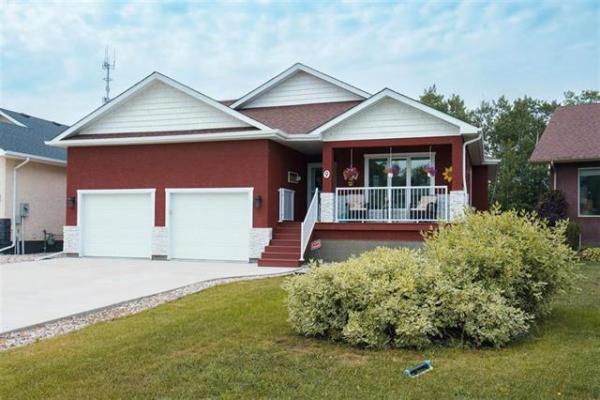Question: I read a story in the Free Press, where you responded to a letter around moisture in the attic. I, too, have an issue and it is peeling paint on the ceiling in the kitchen. At least I think that’s what’s causing the peeling. I have a couple of ducts coming up from bathroom fans that vent through the attic and out the roof. The vent hood that they lead to is a flat, static-air vent hood — not good. In addition, this part of the roof is almost always covered with snow. Drifting snow from a north wind leads to a build up of snow in this location almost all winter. At times, you can see some icicles in the attic around the vent.
I’ve been told this vent should be wrapped with insulation, and maybe Poly as well, to help insulate it and prevent any heat loss. I was thinking of doing that and then installing a raised vent hood on the roof so that the vent won’t get covered by snow so often. The other option is to run the duct another 15 feet, to the other side of the roof slope, where there wouldn’t be any snow build-up. Unfortunately, this would lead to an even longer run in the attic. What do you think?
— Clay Kornelson
Answer: Improperly insulated or installed exhaust fan ducts and hood can cause significant moisture damage and are a fairly common home defect. The solution may be quite simple, but access to the attic and the roof to fix the problem may be the difficult part of the equation.
After looking at the pictures you attached with your inquiry, it is obvious improper arrangement is responsible for the ceiling damage. Nailing down the exact issue may be more difficult, as there are several obvious defects with this job. As with many home issues, amateurish workmanship, often with the use of the wrong materials and/or methods, is the culprit. While I don’t know which defect is directly responsible for the water damage, fixing all the following items should surely solve your problem.
The first thing, as you suggest, is replacing the vent hood on the roof. Someone has improperly installed a standard, square roof vent for the ducts rather than one designed for exhaust fans. The difference between the two is a passive attic vent has small slots or channels under the cap which are continuously open, while the exhaust fan hood has a damper that only opens when the fan is turned on. This damper prevents unwanted cold air from entering the ducting while minimizing warm-air loss from the bathrooms through the fan when it’s not operating. In your configuration, warm air exiting the home continuously will hit any cold air either entering the duct, or at the vent hood, causing condensation. This condensation will surely freeze in cold weather, causing a blockage of the vent hood and/or frost buildup in the duct. Not only will this inhibit proper operation of the fans, it may cause the frost to melt in warmer weather and the resulting water to run back into the attic, fan, or the kitchen ceiling.
To compound this improper installation, it appears there may be two ducts in the attic intersecting just before venting into the improper hood. Whether these two are physically attached or both simply terminating under the roof vent, the results may be the same. Some or most of the warm air expelled from these ducts could easily flow into the attic rather than out through the open roof vent hood. If that happened, frost buildup from condensation would definitely form on the underside of the roof sheathing. As with the ducting, this frost would melt in the first winter thaw, drip and soak the insulation below, possibly running into the ceilings.
The initial solution to this second defect is to split the ducts into two separate entities, and connect both individually to the appropriate vent hoods newly installed either on the roof, or a nearby gable end, if possible. This will not only reduce the likelihood of both fans leaking, it may actually improve their performance by providing the properly sized ducts and hoods for each unit. This is critical, as each exhaust fan will have a specific volume of air movement (usually rated as CFMs) which is contingent on the duct sizing. Installing a high-CFM fan with ducting that is undersized, partially blocked, or connected to another fixture, may significantly affect this feature. Lower airflow may be the result, wasting energy and not adequately venting either of the areas serviced by the individual units.
Finally, the insulation on the ducting appears to be moderately well done but is missing in a few locations. The ducts must be fully insulated, as open spots will be subject to much colder attic temperatures, creating isolated areas of frost from condensation. Removing all of the old pipe wrap-style insulation may be a good idea, allowing the installation of more modern insulation less likely to be affected by moisture. The key here is to ensure the complete duct system is insulated adequately and uniformly, to prevent warm and cold spots that can lead to condensation.
The most difficult part of repairing the improperly insulated and vented ducts and hoods for your exhaust fans is getting access to do good repairs. Both the attic and the roof will have to be accessed, with care taken to install and seal the proper materials, both above and below the roof sheathing.
Ari Marantz is the owner of Trained Eye Home Inspection Ltd. and the past president of the Canadian Association of Home & Property Inspectors — Manitoba (cahpi.mb.ca). Questions can be emailed to the address below. Ari can be reached at 204-291-5358 or check out his website at trainedeye.ca.
trainedeye@iname.com



